Sulei Zhu
SanMove: Next Location Recommendation via Self-Attention Network
Dec 15, 2021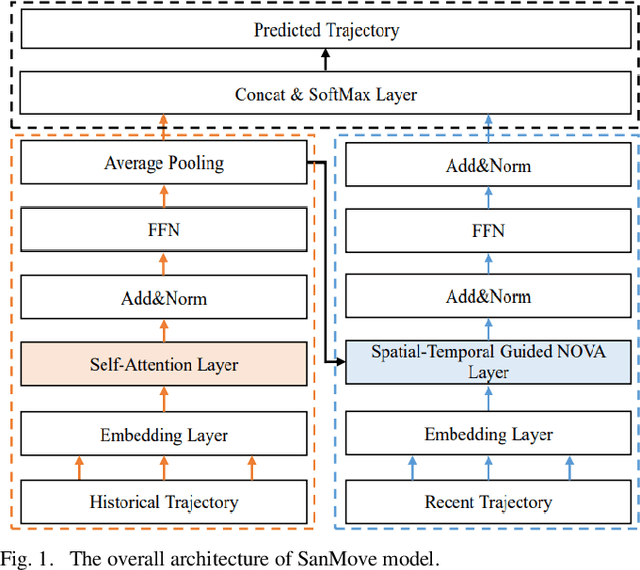
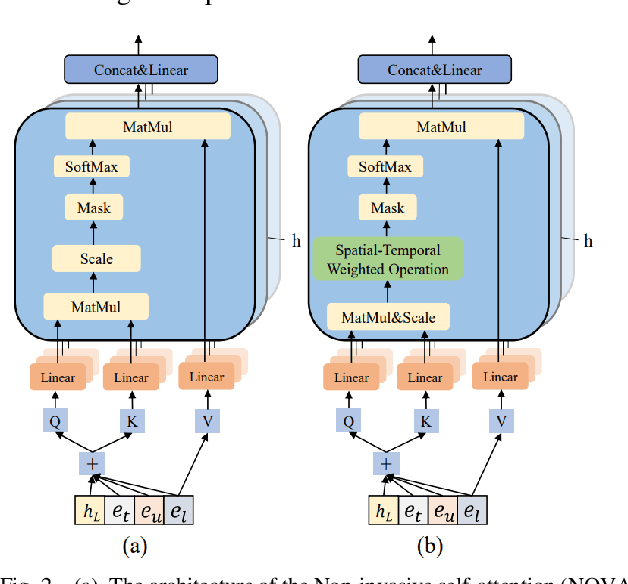
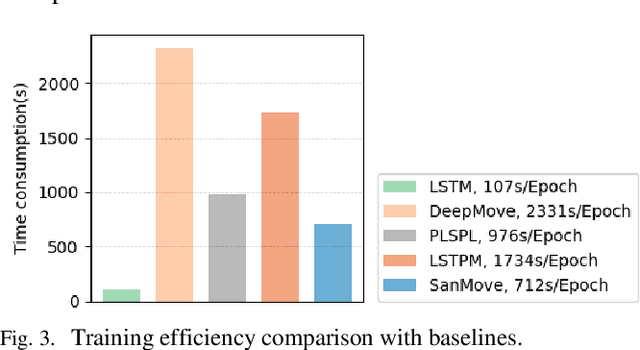
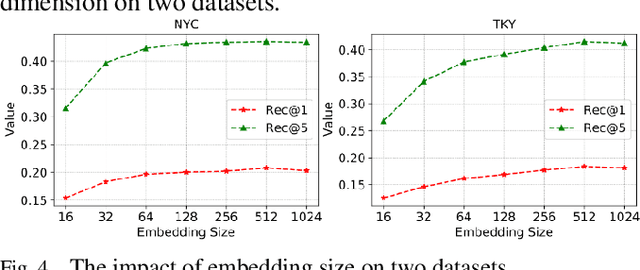
Abstract:Currently, next location recommendation plays a vital role in location-based social network applications and services. Although many methods have been proposed to solve this problem, three important challenges have not been well addressed so far: (1) most existing methods are based on recurrent network, which is time-consuming to train long sequences due to not allowing for full parallelism; (2) personalized preferences generally are not considered reasonably; (3) existing methods rarely systematically studied how to efficiently utilize various auxiliary information (e.g., user ID and timestamp) in trajectory data and the spatio-temporal relations among non-consecutive locations. To address the above challenges, we propose a novel method named SanMove, a self-attention network based model, to predict the next location via capturing the long- and short-term mobility patterns of users. Specifically, SanMove introduces a long-term preference learning module, and it uses a self-attention module to capture the users long-term mobility pattern which can represent personalized location preferences of users. Meanwhile, SanMove uses a spatial-temporal guided non-invasive self-attention (STNOVA) to exploit auxiliary information to learn short-term preferences. We evaluate SanMove with two real-world datasets, and demonstrate SanMove is not only faster than the state-of-the-art RNN-based predict model but also outperforms the baselines for next location prediction.
PG$^2$Net: Personalized and Group Preferences Guided Network for Next Place Prediction
Oct 15, 2021


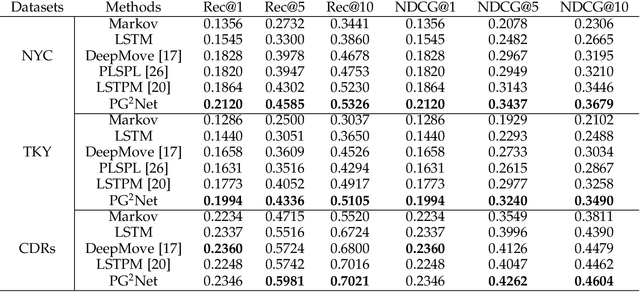
Abstract:Predicting the next place to visit is a key in human mobility behavior modeling, which plays a significant role in various fields, such as epidemic control, urban planning, traffic management, and travel recommendation. To achieve this, one typical solution is designing modules based on RNN to capture their preferences to various locations. Although these RNN-based methods can effectively learn individual's hidden personalized preferences to her visited places, the interactions among users can only be weakly learned through the representations of locations. Targeting this, we propose an end-to-end framework named personalized and group preference guided network (PG$^2$Net), considering the users' preferences to various places at both individual and collective levels. Specifically, PG$^2$Net concatenates Bi-LSTM and attention mechanism to capture each user's long-term mobility tendency. To learn population's group preferences, we utilize spatial and temporal information of the visitations to construct a spatio-temporal dependency module. We adopt a graph embedding method to map users' trajectory into a hidden space, capturing their sequential relation. In addition, we devise an auxiliary loss to learn the vectorial representation of her next location. Experiment results on two Foursquare check-in datasets and one mobile phone dataset indicate the advantages of our model compared to the state-of-the-art baselines. Source codes are available at https://github.com/urbanmobility/PG2Net.
 Add to Chrome
Add to Chrome Add to Firefox
Add to Firefox Add to Edge
Add to Edge